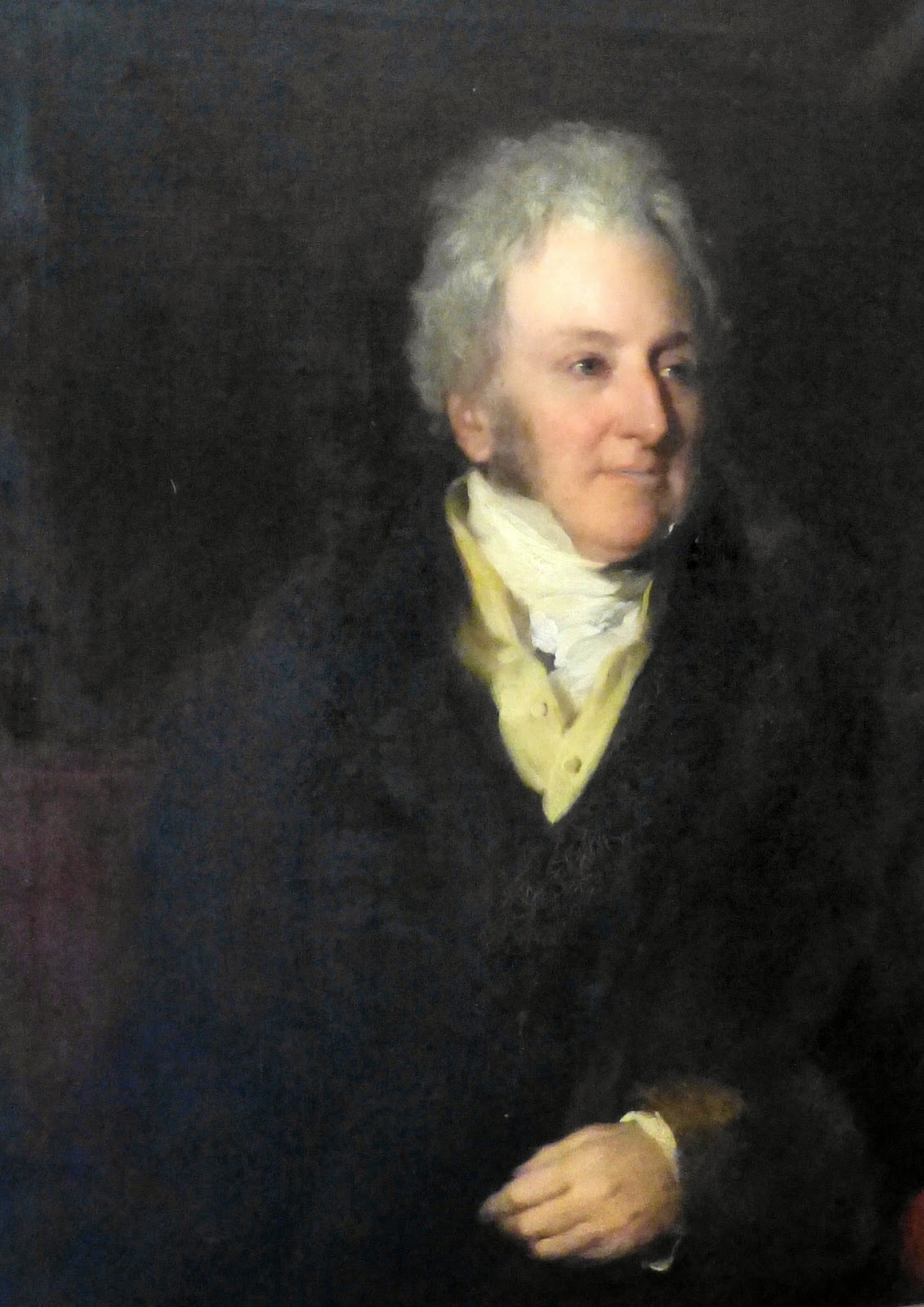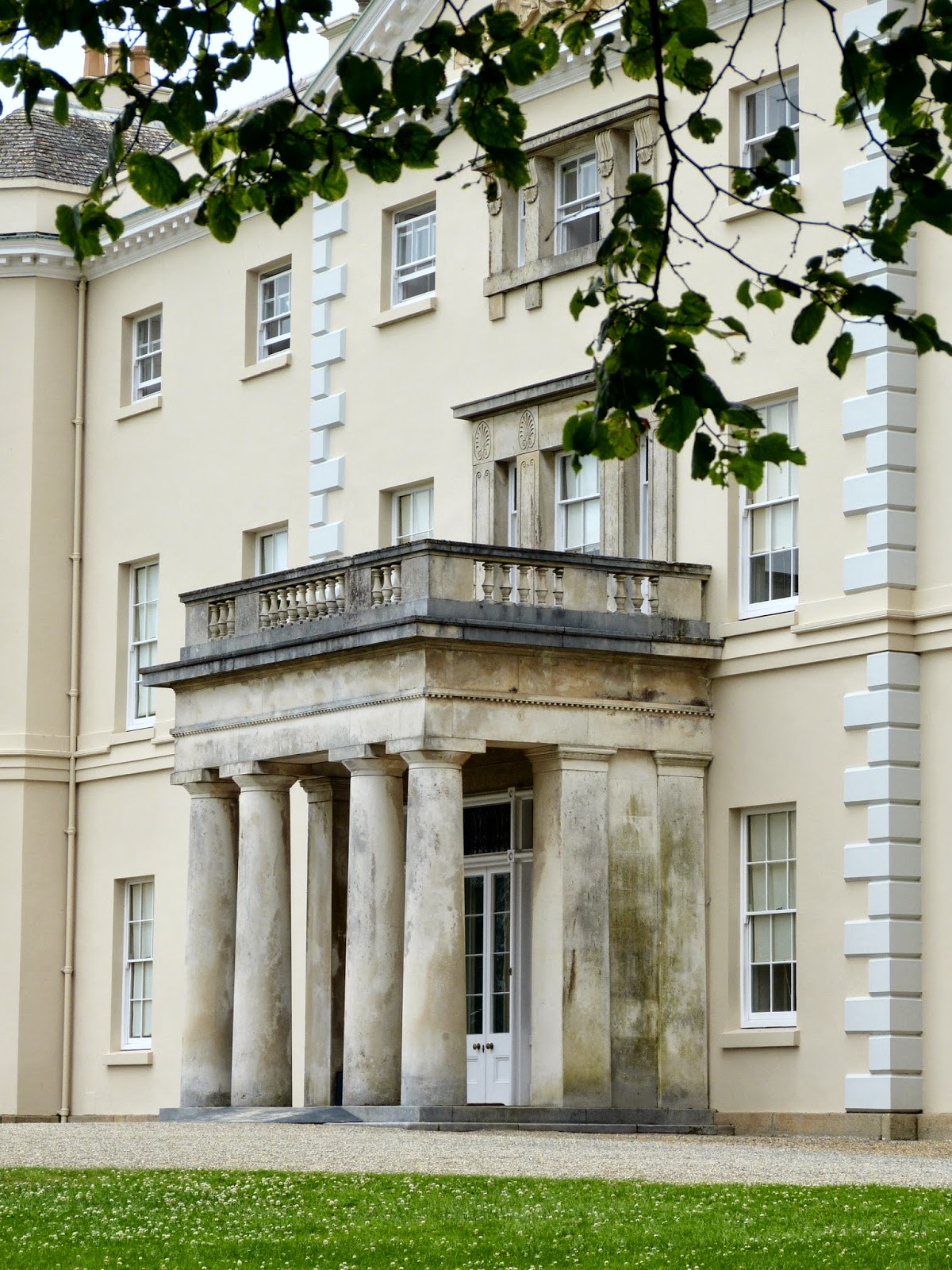 |
| John Parker, 1st Earl of Morley by Frederick Richard Say (1830) |
John Parker, 1st Earl of Morley, (3 May 1772 – 14 March 1840) was the owner of the Saltram estate in Devon and an active member of the House of Lords in favour of parliamentary reform. His first wife, Augusta Fane, notoriously eloped with Sir Arthur Paget.
Family background
 |
| Theresa Parker and Little Jack by Sir Joshua Reynolds (c1775) |
John Parker, known as Jack, was born on 3 May 17721, the only son of John Parker, 1st Baron Boringdon, of Saltram in Devon, and his wife Theresa Robinson, a younger daughter of the 1st Lord Grantham. His parents were advocates of inoculation and when he was two years old, he was inoculated against the smallpox at a cost of £42.
His mother died in 1775, shortly after the birth of his sister, Theresa, and his aunt, Anne “Nanny” Robinson, came to Saltram to look after them.
 |
| Anne "Nanny" Robinson by John Downman (1780) |
Jack was educated at Plympton School and then at Dr Whyte’s boarding school in Hammersmith where the schoolmaster inspired him with a passion for hot air ballooning and he developed an enduring friendship with Granville Leveson-Gower.2 The year before going up to university, he lived in Yorkshire with Frederick “Fritz” Robinson, his mother’s younger brother, accompanied by Dr Andrews, later Dean of Canterbury, as tutor.
Jack went up to Christ Church, Oxford, on 7 April 1789 where he was reunited with his schoolfriend, Granville Leveson-Gower.3 He joined the Literati and became friends with George Canning and Lord Henry Spencer.
 |
| Lord Granville Leveson-Gower from Lord Granville's Private Correspondence (1916) |
In August 1789, George III and Queen Charlotte visited Plymouth and stayed at Saltram for 12 days.
 |
| George III from Memoirs of Queen Charlotte by WC Oulton (1819) |
The Grand Tour
In 1793, Jack embarked on a Grand Tour with a party which included Lord Amherst, Granville Leveson Gower and George Canning. They visited Paris, Geneva, Genoa, Florence, Rome and Venice as well as parts of Germany and the Low Countries and St Petersburg in Russia.
Lady Elizabeth Monck
In Naples, Jack became involved with the enchanting Lady Elizabeth Monck whilst Granville Leveson-Gower pursued Harriet, Lady Bessborough. Lady Elizabeth was the second daughter of Arthur Saunders, 2nd Earl of Arran, and was married with two daughters, but her husband was complaisant and neglected her for drinking and gambling.
Jack started a long-lasting affair with Lady Elizabeth which resulted in the birth of three illegitimate sons who took the name Stapleton: John (1797), George (1799) and Augustus (1800).
A noble title
Jack inherited his father’s estate and title in 1788, becoming 2nd Baron Boringdon when he was only 16 years old. He was gazetted lieutenant-colonel of the North Devon militia in 1794 and colonel in 1799. He was elected a fellow of the Royal Society in 1795.
On 29 November 1815, Jack was made Viscount Boringdon of North Molton, Devon, and Earl of Morley.
 |
| The family arms above the entrance to Saltram |
Lady Elizabeth Monck divided her time between Jack and her husband, but her relationship with Jack broke down when she refused to get a divorce so she could marry him.
On 20 June 1804, Jack married Augusta Fane, second daughter of the 10th Earl of Westmorland and sister to Sarah Sophia, later Countess of Jersey. They had one son, Henry Villiers (1806), but the marriage was not a success. Jack was pompous and egotistical and Augusta despised her unfaithful husband and resented his ongoing relationship with Lady Elizabeth Monck.
To Jack’s annoyance, one of his university friends, Sir Arthur Paget, a politician and diplomat and son of Henry, 1st Earl of Uxbridge, began to show an interest in Augusta. The feelings were reciprocated and on 18 May 1808, Augusta caused a scandal by eloping with Sir Arthur Paget. They were married immediately after Jack divorced her by Act of Parliament on 14 February 1809.
A second marriage
On 21 August 1809, Jack married Frances Talbot.4 Frances had no fortune or title to recommend her, but she was a very charming lady who readily embraced not only her stepson, but also Jack’s illegitimate children. Jack and Frances had two children of their own, Edmund and Caroline. Sadly, Jack’s son by his first marriage died suddenly in 1817 and Caroline died a year later.
 |
| Frances Parker (née Talbot) by Frederick Richard Say (1830) |
Jack took his seat in the House of Lords at an early age and was active in the debates. He supported the Tory government of William Pitt the Younger until his death and then backed George Canning, with whom he regularly corresponded. On two occasions, he tried to introduce a bill to promote vaccination as a means of controlling smallpox, but was forced to withdraw it, the second time because the Lord Chancellor said that spreading infection was punishable under common law! After Canning’s death in 1827, Jack allied himself with the Whigs and became a firm supporter of parliamentary reform.
Expensive developments
Jack commissioned the architect John Foulston to create a new entrance to Saltram House in the Greek Revival style and expand the library.
 |
| The entrance to Saltram House |
On his estates, Jack reclaimed areas of marshland at a cost of £15,000 in order to build a racecourse. He built a cast-iron toll bridge across the Laira and a shipbuilding yard at Cattedown for naval and commercial ships.
Jack owned the Cann slate quarries and built a canal and tramway which linked to the Plymouth and Dartmoor Tramway. These engineering projects were not always financially successful, and on his death, he left behind debts of £258,000.
Death
John died at Saltram on 14 March 1840. He was succeeded by his only surviving legitimate child, Edmund. Frances outlived her husband by 17 years and died at Saltram in 1857 after a short illness.
Rachel Knowles writes faith-based Regency romance and historical non-fiction. She has been sharing her research on this blog since 2011. Rachel lives in the beautiful Georgian seaside town of Weymouth, Dorset, on the south coast of England, with her husband, Andrew.
Find out more about Rachel's books and sign up for her newsletter here.If you have enjoyed this blog and want to encourage us and help us to keep making our research freely available, please buy us a virtual cup of coffee by clicking the button below.
Notes
(1) Debrett’s gives date as 5 May 1772.
(2) From The early life of John Parker III - 1st Earl of Morley by AS Rayfield (2014). Rayfield refers to the schoolmaster by the name of Kyte rather than Whyte.
(3) Rayfield gives date as 1791.
(4) Rayfield says 22nd.
Sources used include:
Courthope, William, editor, Debrett's Complete Peerage of the United Kingdom of Great Britain and Ireland (1838)
Evans, Sian, Saltram (National Trust 2012)
Fletcher, Ronald, The Parkers at Saltram 1769-1789 (BBC 1970)
Norgate, G Le G, rev Matthew, HCG, Parker, John, first earl of Morley (1772-1840) Oxford Dictionary of National Biography (Oxford University Press, 2004; online edn May 2009, accessed 21 July 2014)
Rayfield, AS, The early life of John Parker III - 1st Earl of Morley (Blog, 2014)
Viveash, Chris, Lady Morley and the ‘Baron so Bold’, from the Journal of the Jane Austen Society of North America – Persuasions #14 (1992)
All photographs © Andrew Knowles - RegencyHistory.net


No comments:
New comments are not allowed.